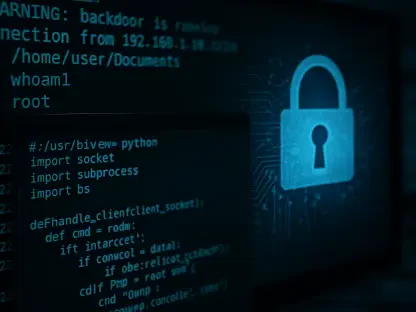The recent directive from US Defense Secretary Pete Hegseth to pause US Cyber Command’s offensive operations against Russia has sparked considerable debate and analysis. This strategic decision is viewed as part of the Trump administration’s efforts to bring Russia to the negotiation table amidst its continued actions in Ukraine. Widely covered by reputable sources such as The Record, The New York Times, and The Washington Post, this development has elicited a wide range of reactions from cybersecurity experts and policymakers. It also brings into question the broader implications of shifting cyber strategies at a time when the cyber threat landscape is dynamically evolving.
Shift in Offensive Cyber Strategies
US Cyber Command, an integral pillar of the nation’s military infrastructure, holds the dual responsibility of mounting cyber offensives and defending against cyber threats. The directive to halt offensive actions against Russia marks a significant shift in the US’s cyber strategy, laden with potential consequences for its overall cyber policy. This temporary cessation of hostilities could be seen as an effort to open diplomatic channels with Russia. However, questions linger about the risks and potential effectiveness of such a unilateral cyber de-escalation.
Despite this significant shift on the offensive front, the United States Cybersecurity and Infrastructure Security Agency (CISA) has reiterated that its operational stance remains unchanged, with a continued focus on protecting critical infrastructure. Unlike Cyber Command, CISA’s mandate does not include offensive cyber operations but zeroes in on ensuring homeland security and resilience. This separation of roles underscores the agency’s dedication to its primary mission, even as larger strategic decisions play out around it. The divergence in missions between CISA and Cyber Command illustrates the multifaceted nature of the US’s approach to national cybersecurity.
Potential Benefits and Risks
Proponents within the Trump administration argue that this strategic pause could lure Russia into reducing its cyber hostilities and engaging in broader geopolitical discussions. However, a lack of reciprocal restraint from Russia raises serious strategic concerns. There is no indication that President Putin will reciprocate by scaling back Russia’s aggressive cyber campaigns aimed at US targets. This imbalance provokes critical questions about the prudence of unilaterally halting offensive cyber operations without gaining similar concessions from the adversarial state.
Historically, Russian cyber operations have been marked by their aggression and the severe damage they have inflicted on US infrastructure and private sector assets. Incidents such as the NotPetya attack, which caused billions in damages worldwide, credential-stealing campaigns compromising sensitive information, and the infamous SolarWinds supply chain breach, spotlight the formidable threats posed by Russian cyber activities. In light of these past and persistent threats, the question of whether the US can afford a prolonged pause in its cyber offensives remains hotly debated among experts and policymakers.
Shifting Focus to China
Against the backdrop of these developments, another major narrative is emerging: the growing cyber threat from China. One recent high-profile incident, the Salt Typhoon attack, saw Chinese actors infiltrate major US phone networks, underscoring the advanced capabilities and strategic intentions behind such operations. Analysts speculate that the Trump administration might be redirecting its cyber focus toward China, signaling an acknowledgment of the profound technological and strategic rivalry between the two nations.
This recalibration of strategic priorities suggests a broader reassessment of immediate and long-term cyber threats. By potentially easing tensions with Russia, the US may be attempting to reallocate resources and bring heightened attention to the increasingly sophisticated and pervasive cyber threats posed by China. The broader geopolitical implications of this potential shift are significant, reflecting an adaptive approach to the complex international cyber threat landscape, where state and non-state actors are continuously jostling for technological dominance and influence.
Notable Cybersecurity Incidents
The text transitions to highlight several critical cybersecurity incidents from around the globe, illustrating the diverse and complex nature of current cyber threats. For instance, in the Netherlands, police successfully carried out an operation that led to the arrest of suspected phishers. These individuals attempted to avoid detection and arrest by posing as recreational fishers, complete with fishing gear. However, their efforts were in vain, demonstrating law enforcement’s adaptability and tenacity in tackling cyber fraud.
In another notable case, the Medusa ransomware gang committed an error that exemplifies the often chaotic and amateurish elements within certain cybercriminal organizations. The gang mistakenly targeted the small town of Aurora, Nebraska, believing it to be the larger and more affluent Aurora, Colorado, and demanded a substantial ransom of $230,000. This blunder brought to light the pervasive threat posed by ransomware, but also highlighted the occasional missteps that occur within these criminal networks.
Research and Disclosures
Adding to the array of cybersecurity developments, researchers from George Mason University have made significant strides in exploring vulnerabilities in existing technology. Their recent work revealed methods to exploit Apple’s “Find My” device-tracking system to locate Bluetooth-enabled devices beyond Apple products. This technique involves embedding trojan code on a target device and brute-forcing private keys used by the Find My network, underscoring both the innovation and the potential risks inherent in cybersecurity research.
Moreover, several critical cybersecurity vulnerabilities were disclosed across various platforms, further emphasizing the need for continuous vigilance. Among these were serious flaws identified in Ping Identity’s PingAM Java Agent, Citrix’s NetScaler, and Cisco’s Nexus switches, each carrying significant risks if left unpatched. Additionally, a cross-site scripting vulnerability in the TawkTo Widget highlighted the continued threat landscape faced by web applications. These disclosures serve as crucial reminders of the importance of timely patches and updates to safeguard against potential exploits.
Surveillance and Espionage
The recent directive from US Defense Secretary Pete Hegseth to halt US Cyber Command’s offensive actions against Russia has ignited significant debate and analysis. This strategic move is widely seen as part of the Trump administration’s broader initiative to compel Russia to engage in negotiations, particularly in light of its ongoing activities in Ukraine. Esteemed publications such as The Record, The New York Times, and The Washington Post have extensively covered this development. It has triggered a broad spectrum of reactions from cybersecurity experts and policymakers, who are analyzing its potential repercussions. This decision raises critical questions about the wider impact of changing cyber strategies at a time when the cyber threat environment is dynamically evolving. The debate encompasses not just the immediate effects but also how this strategy aligns with long-term national security goals in an increasingly complex cyber landscape.









